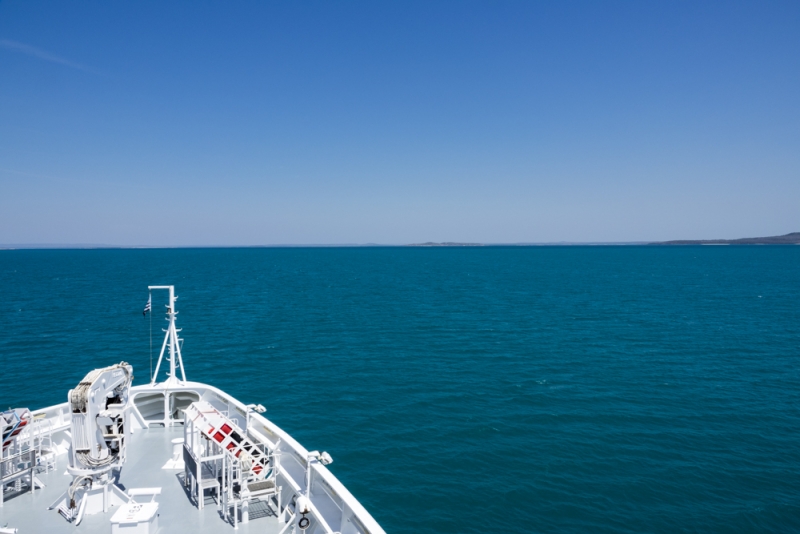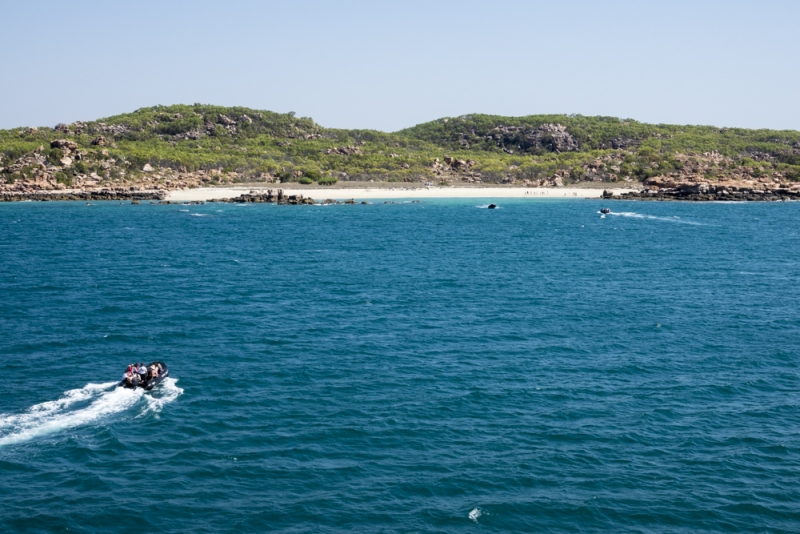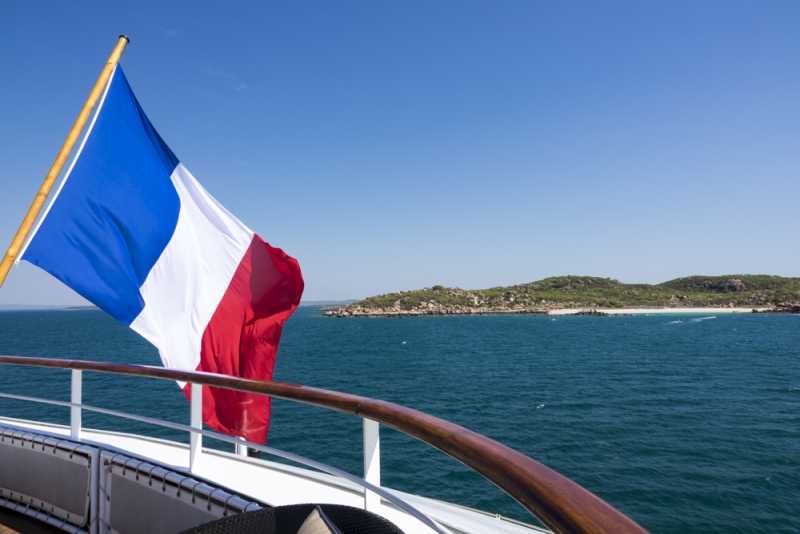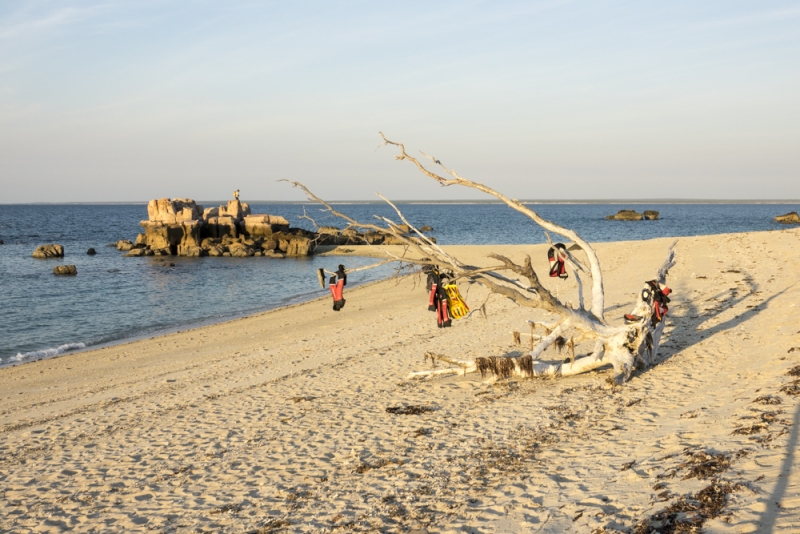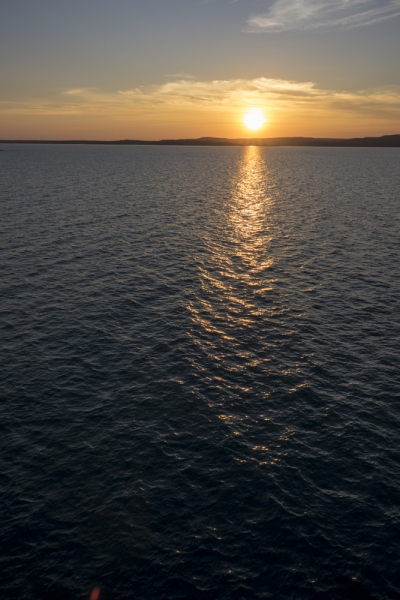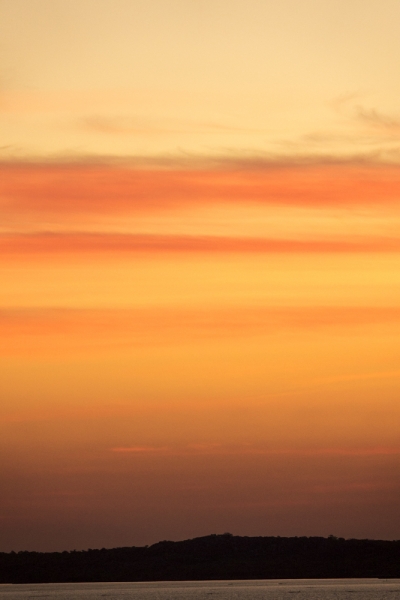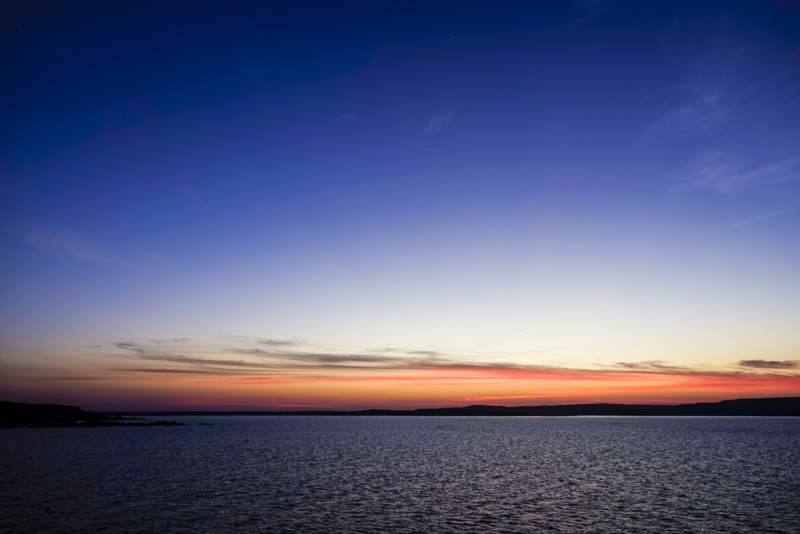Vansittart Bay is home to Jar Island, named for the shards of (probably) Macassan pottery found there by Philip Parker King (1791-1856). Jar Island is also significant for the Gwion Gwion style rock art galleries that are unique to the Kimberley region. We are informed that the terms of our visit to the galleries on the trip are based on no commercial or social media use of photos we may take of the rock art. So no photos of the rock art, which is thought to depict the oldest detailed descriptions of human figures in the world.
Before we arrive at Vansittart Bay, Captain Marchesseau holds his ‘Word of Welcome’ talk at 9am, most of which is dedicated to introducing the expedition team, and conducting the zodiac safety briefing.
We reach Vansittart Bay around 1pm, the sky is clear and blue, and the sea is calm and green.
The expedition team is scrambling to be ready for the first group to disembark at 1.30pm. It’s a relatively easy ascent to the rock art galleries on Jar Island, which are scattered amongst the rocky outcrops.
The Gwion Gwion paintings are interesting depictions – elongated human figures with what appears to be ceremonial headdresses, spears, bracelets etc. There is plenty of controversy surrounding the origin and age of the art, which is unresolved. The Aborigines regard them as ‘not theirs’, as there is no oral or other history of their provenance, but see it as their role to protect the paintings as the art has always been there. It’s a balmy 36 degrees Celsius in the mid-afternoon heading back down the hill to L’Austral.
There is an unusual species of tree growing on the landing beach – when in flower, the blooms bear a strong resemblance to zodiac lifejackets!
The sun sets around 5:30pm – this is the first of what is a nightly event of beautiful sunsets.
Tomorrow is a busy day – a helicopter ride over Mitchell Falls, and a two hour zodiac cruise up the Hunter River.

